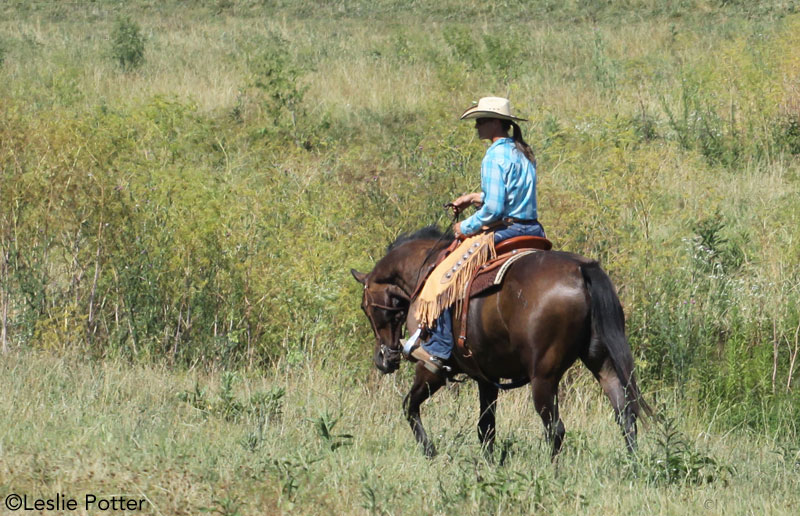Q: I recently began leasing a 20-year-old mare. She’s a sweetheart, but she hasn’t been in regular work for about three years. I can only ride about once a week and while there is plenty of space to trail ride, there isn’t much access to an arena. So on the days I don’t have time to ride I’ve been trying to longe her for a few minutes where it’s possible. Is there anything else I can do to help get her back into condition?

A: Congratulations on your new equine relationship! Sweet older horses are true gems because they have so much experience to share. They do, however, require some extra care and you are right to be concerned about not over-exerting this mare.
It can take a couple of months, not days or weeks, to get a sedentary horse back into condition. Keep in mind that all horses are subject to soft tissue injuries if they’re worked hard before they’ve had a chance to get in shape. But your older mare likely has arthritic changes in her joints due to her age. That means she’ll need even more attention as she returns to work.
One suggestion is to forego longeing, which can be tough on the mare’s joints. Instead, hand walk her around the stable. Figure out your route and then make several laps each visit.
Turnout time in a large paddock, where the mare can amble about, is also beneficial. If she tends to just stand in the corner, encourage her to move around briskly at the walk and trot. Consistency is the key to conditioning, however, so if you can’t maintain a regular walking or turnout schedule see if you can connect with another horse lover (at the stable or in your area) who will do it for a small fee. Short on cash? Perhaps you can barter. There might be some form of horse care you can provide in exchange for their help.
Providing your mare gets at least a couple of “walk about days” between your weekly rides, you can slowly build up both pace and distance under saddle. Just do one at a time, though. For example, if you go further on the trail one ride you cannot also go faster. And if you decide to integrate some trotting into your trail ride you can’t also go further.
Always stick to maintained trails and avoid uneven terrain that would over-tax your mare at this time. Signs that you’re doing too much include excessive sweating (a sign of fatigue and pain), tying up (intense muscle spasms which temporarily paralyze the hindquarters) and rapid heart and respiration rate (the mare’s nostrils will flare widely and her sides will be visibly heaving). Also look for indications that she’s sore or stiff. If your mare seems to stumble frequently or if she drags her hind toes it could indicate an underlying lameness.
Before putting any of these suggestions into use, please consult with your local equine veterinarian. He or she can devise an exercise program specifically tailored for your mare. With loving care and veterinary input, your mare can enjoy a new lease on life.






I’m wondering about this person, though… if they only have about one day a week to spend with their horse, maybe they should reconsider owning a horse at all. They may have to accept the fact that they just don’t have time for one. I think riding a friend’s horse, or just taking lessons might be a better option for someone with limited time.
Perhaps a friend(s) could do some hand walking or slow riding on days you can not. Maybe this summer you will get more time with your girl.
If we all based our reasons for owning a horse based on time to ride, how many less horse owners and riders would there be?
I have two aged horses and if you work them in slowly at the beginning of the season, give them plenty of turnout with other horses to keep’em moving a bit more, they are great…
If you plan on doing something more stressful than relaxed trail riding such as hunter jumping, dressage, or eventing, then your choice in horses might be different too. 20 somethings usually aren’t usually cleaning up in the show jumping ring, they are TEACHING people how to get there.
How old is considered an older horse? My mare is 15, would you say she’s old?